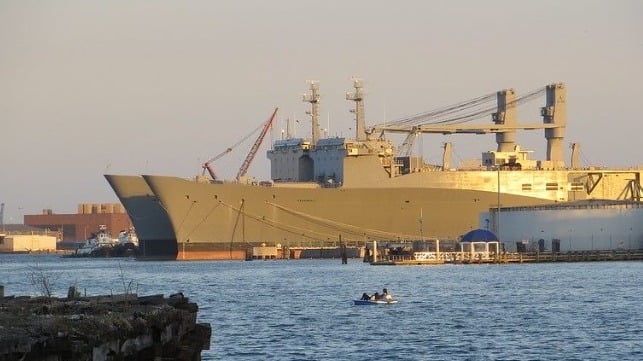Multiple Vessels Trapped in Baltimore, Including Sealift Ships

As federal and local authorities focus on the emergency response to the collapse of Baltimore's Francis Scott Key Bridge, Port of Baltimore's inner harbor remains cut off from the rest of the world. No vessels can get in to deliver Baltimore's core cargoes - containers, cars, gypsum and sugar - and no vessels can get out.
The latter fact will be of particular interest for shipowners who have vessels inside the harbor. These include one car carrier, the Swedish-flagged Carmen; five bulkers, the Klara Oldendorff, Balsa 94, Saimaagracht, Phatra Naree and JY River; the tanker Palanca Rio; and four laid-up ships belonging to the Maritime Administration's Ready Reserve (RRF), the Cape Washington, Gary I. Gordon, SS Antares and SS Denebola.
The Biden administration has restoration of the navigation channel at the top of its list of priorities, Secretary of Transportation Pete Buttigieg said Wednesday.
"We can't wait for the bridge work to be complete to see that channel reopened. There are vessels that are stuck inside right now and there's an enormous amount of traffic that goes through there. That's really important to the entire economy," he told NPR in an interview.
The closure's effect on four RRF vessels could have potential implications for emergency sealift preparedness. The RRF's vessels are kept in reduced operating status at multiple sites around the nation, and the shutdown of any one port would not affect the service's ability to mobilize transport options for most overseas contingencies.
However, two of the vessels in Baltimore are high-value assets - the steamships SS Antares and SS Denebola. These are two out of eight Fast Sealift Ships - a class of former SeaLand boxships that were converted for military ro/ro service in the 1980s. They are among the fastest cargo ships in operation today, and their peak speed tops out at 33 knots.
The eight FSS vessels have delivered goods for every major U.S. conflict since the First Gulf War; however, these powerful steamships are 50 years old, and their ability to get under way is uncertain. The RRF has acknowledged issues with its aging tonnage, and steam plants of the Cold War era are particularly challenging to man and maintain, as they no longer exist in commercial service.
Top image: EllenM1 / CC BY NC 2.0
